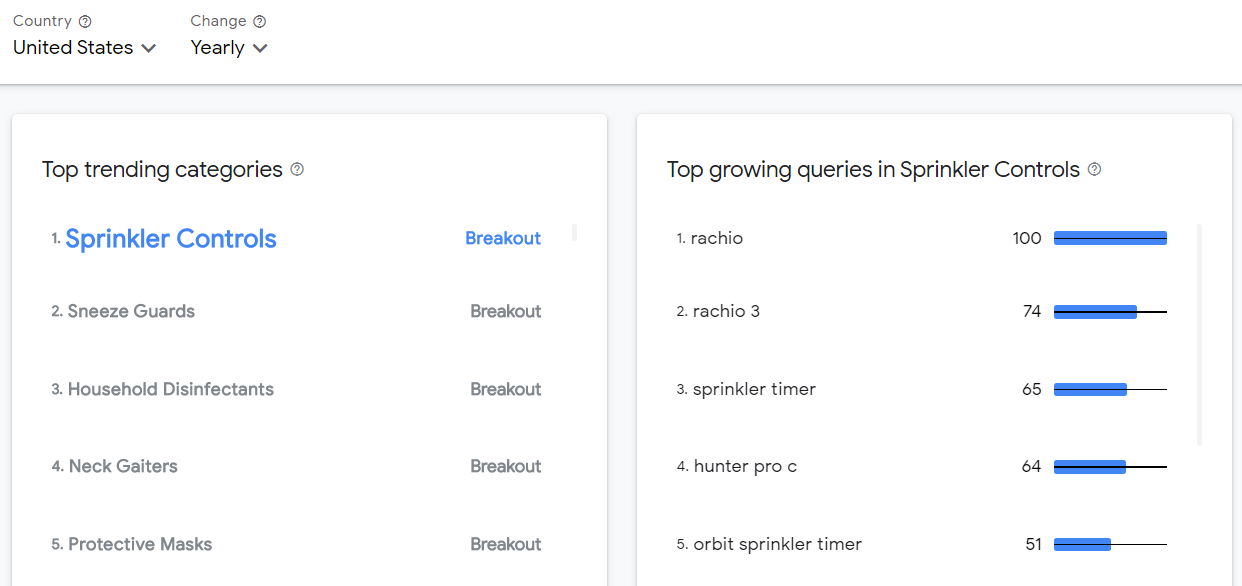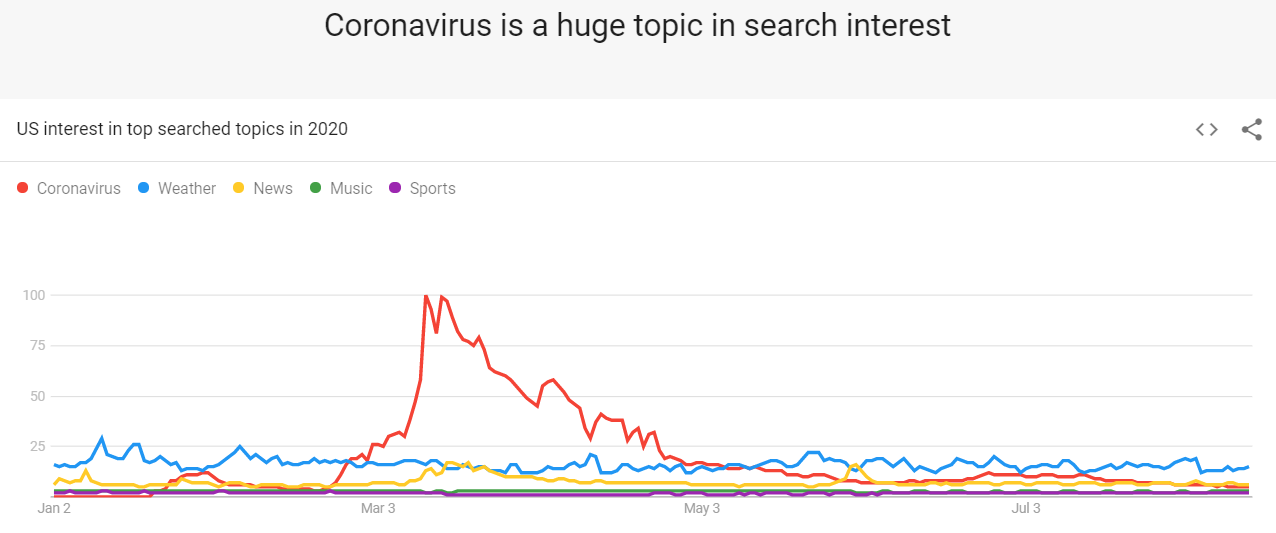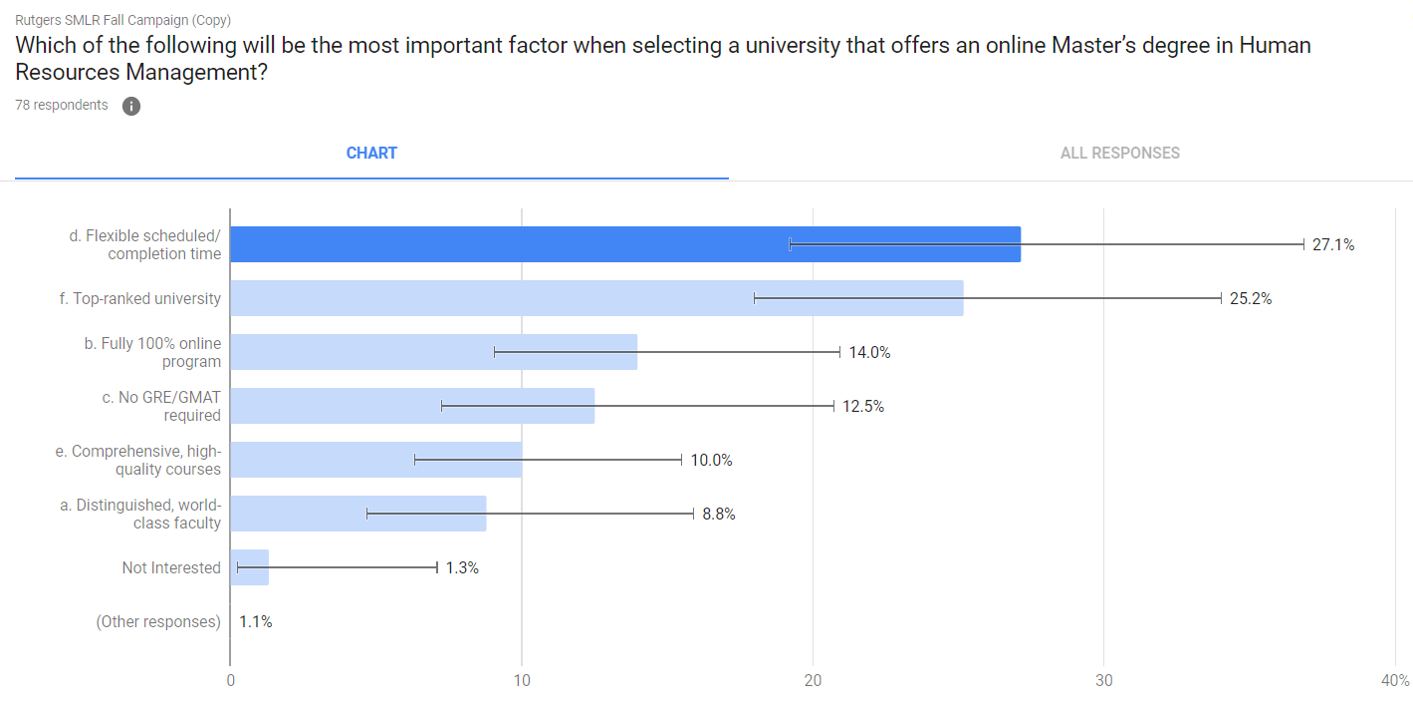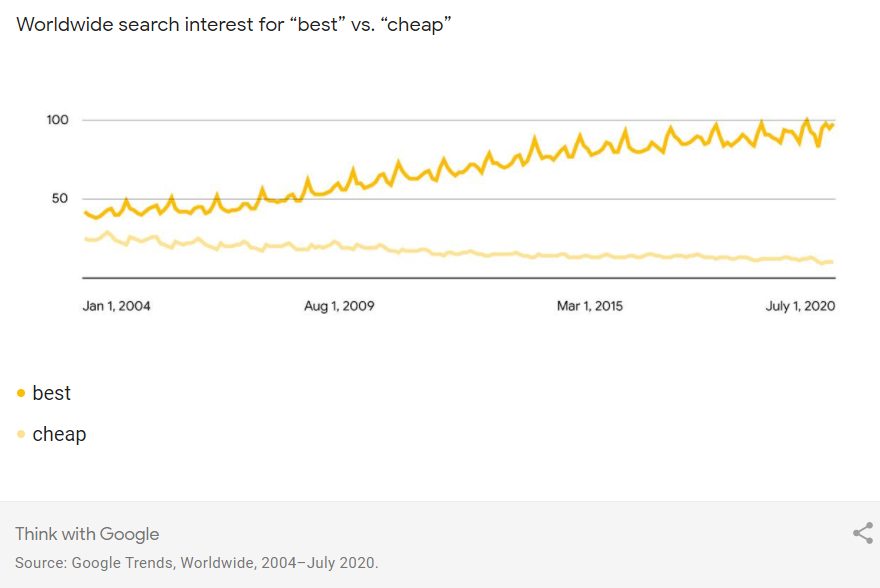Consumer behavior is changing rapidly and unpredictably during the coronavirus pandemic.
That’s why conducting keyword research is now more important than ever to understand the latest shifts in consumer intent.
Although 100% of SEO professionals worth their salt understand how to dig insights out of Google Search Console and know which keyword tools have helped them in the past to increase traffic, rankings, and visibility in search results, this is the time to think outside the search box.
Even one new insight per fortnight can help your company or clients pivot to create more relevant content as they navigate the “new normal.”
That means taking advantage of resources that didn’t exist before March 11, 2020, when the World Health Organization (WHO) declared the coronavirus outbreak a pandemic, or using extra tools to double-check your assumptions.
Here are some places that I now visit virtually every weekday and some tools that I’ve reached for in the toolbox that I rarely used before I had to start dealing with strange things that go bump in the night.
1. Rising Retail Categories
In May 2020, Think with Google launched an interactive tool called Rising Retail Categories to help us understand:
- Fast-rising retail categories in Google Search.
- The locations where they’re growing.
- The queries associated with them.

For example, the top trending categories in the U.S. year-over-year include:
- Sprinkler controls.
- Sneeze guards.
- Household disinfectants.
- Neck gaiters.
- Protective masks.
Or, focus on the top trending categories month-over-month to discover:
- Food Container Covers (+100%).
- Crayons (+100%).
- Medical Equipment (+90%).
- Pen & Pencil Cases (+70%).
- Baby & Toddler Outerwear (+60%).
Then, tackle the top trending categories week-over-week, and examine:
- Blank ID Cards (+40%).
- Pie & Pastry Fillings (+30%).
- Play Mats & Gyms (+30%).
- Foosball Tables (+30%).
- Neck Gaiters (+30%).
- Chalkboards (+30%).
If your company or clients makes any of these products, this is your opportunity to spot a key trend and become a hero.
2. Coronavirus Search Trends
In March 2020, Google launched Coronavirus Search Trends.
There was a surge in search interest for the topic, coronavirus, from late February through early May.
Since then, search interest in coronavirus has fallen below the topic, weather, and is now roughly equal with search interest in the topic, news, but still remains above the topics of sports and music.

3. The U.S. Economy & COVID-19
Recently, Google has added a new section of its Coronavirus Search Trends that is focused on The U.S. Economy and COVID-19.
How has the Coronavirus pandemic affected searches around the economy?
How do they compare now to searches in the past?
Scroll down the page to see search interest in the term, recession, since 2004.

And keep scrolling down to see the spikes in search interest in other terms, like unemployment benefits, food bank, food stamps, and mortgage forbearance.
Or, look at the map of the country to see where search interest in terms like debt, bankruptcy, and “can’t pay rent” are located.
4. Shopping Insights
Google launched Shopping Insights in October 2015, but I’ve rarely used the tool before the COVID-19 recession despite the fact that it enables you to see how your company or clients stack up against your competitors, and it lets you track competing products in your category.
In these “extraordinarily uncertain” times, it’s a life saver.
Now, it’s painfully obvious that this year’s disruptions are making it hard for retailers to plan for the holidays.
But, Shopping Insights helps them stay up to date on what shoppers want and follow trends in their category.
How can Google provide these shopping insights?
According to Think with Google, in 63% of shopping scenarios, shoppers go online to conduct research before they make a purchase decision, regardless of whether they end up buying online or in a store.
With daily search data for 55,000+ products, 45,000+ brands, and nearly 5,000 categories across the U.S., Shopping Insights helps you better understand customers’ shopping intent online, and make more informed merchandising and marketing decisions across online and offline channels.
For example, the top brands in the Toys & Games category, based on data from July 17 to August 16, 2020, are:
- LEGO.
- Hasbro.
- Mattel.
- Funko.
- Hot Wheels.
So, if you are planning for either Small Business Saturday or the entire Holiday Season, you know which brands to stock on your shelves.

5. Market Finder
Google launched Market Finder in November 2017, but I’ve rarely used the tool in the past.
But, it has now become a game-changer when helping clients navigate the “new normal.”
For example, I’m working with the Rutgers School of Management and Labor Relations (SMLR) to generate applications for its Online Professional Masters in Human Resource Management program.
By entering SMLR’s URL into Market Finder, I was able to calculate which regions offer the best opportunities for growth, based on key metrics for my chosen categories.
Within the United States, they are California, Texas, and Florida.
For Rutgers, which is the State University of New Jersey, this came as a major surprise, because it represents a significant shift from the geographic trends before the pandemic.

6. Google Surveys
Google Consumer Surveys was launched in March 2012. It was renamed Google Surveys in October 2016.
It’s become one of the essential tools in my toolkit for getting valuable insights into the minds of my clients’ target audiences.
If you haven’t used it yet, Google Surveys is a market research tool that gathers data from survey questions that you write.
Web users answer your survey questions in order to access high-quality content on the Google Display Network.
In turn, content publishers get paid as their users answer your questions. Google then aggregates and analyzes the responses through a simple online interface.
Yes, I also use Search Console and keyword tools. But, those tell me “what” people are searching for.
They don’t tell me “why” people are conducting those queries.
That’s why I’ve used Google Surveys multiple times to “see around corners or peek above walls,” as the toy periscope ads often say.
Only now, Google Surveys help me uncover search intent, which is much more valuable.
I have frequently used screening questions to ensure that the respondents to a particular survey represent the niche audience that my client is targeting, instead of anyone and everyone who used a search term.
And Google Surveys has enabled me to get answers within days instead of weeks with more traditional survey methods.
Oh, and did I mention that it was cheap?
No, it’s not free, but prices start of $0.10 per completed survey, although I typically pay about $1.50 per completed survey because I use surveys with 2 to 10 questions that are targeted at respondents of specific ages, genders, or locations.
For example, keyword research will generally help me select a keyword phrase to optimize the title and headline of a landing page.
But, Google Surveys will help me to ensure that the content on that landing page actually addresses the consumer intent behind the query.

Why is that valuable?
Because you can do more than generate organic search traffic.
SEOs can generate organic search traffic that converts into qualified leads or online sales.
7. Google Trends
Google Trends was launched in May 2005, so it’s the oldest tool on this list.
And many SEO professionals don’t use it that often because it doesn’t provide data on organic search volumes.
But these aren’t normal times.
And finding insights that can be processed within minutes of an event happening in the real world can get SEOs a seat at the table where strategic decisions are made.
For example, I just taught a course for the New Media Academy (NMA) on “Creating a Digital Marketing Strategy” to a group of more than 100 business professionals in the United Arab Emirates.
And one of the recent articles that I shared with my NMA class was entitled, How people decide what to buy lies in the ‘messy middle’ of the purchase journey.
It was written by Alistair Rennie and Jonny Protheroe, who both work on Google’s consumer insights team, and it was published last month in Think with Google.
Rennie and Protheroe used Google Trends to take a look at worldwide search interest for “best” vs. “cheap” from January 1, 2004, through July 1, 2020.

Now, I don’t know about you, but I’ve never done this particular comparison before.
And I was surprised to see that worldwide search interest for “best” has increased steadily over the past 16-and-a-half years, while worldwide search interested for “cheap” had decreased steadily over the same period of time.
Oh, and the Great Recession of 2007-2009 didn’t impact these trends at all.
Now, that’s in insight worth taking to the next Zoom meeting of your entire marketing team.
As your company or clients deal with these “extraordinarily uncertain” times, this is not time to create and optimize new content for “cheap.”
You should create and optimize new content for “best,” instead.
Why?
Because that’s what your customers are searching for.
And, even though we’re facing an unprecedented crisis, it’s worth remembering that a crisis represents both a threat and an opportunity for your company or clients.
That means this unprecedented crisis represents a threat and an opportunity for you, too.
That’s why this is no time to continue using the same old tools that you learned to use five, 10, or 15 years ago.
It’s time to explore some or all of the alternatives mentioned above.
Who knows, they may help your company or clients bounce back from the COVID-19 recession more quickly, or they may even help you bounce forward to your next promotion in a shorter period of time.
More Resources:





